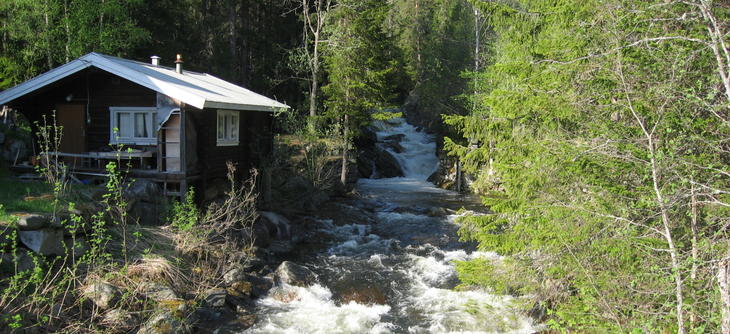Gjuvåa Power Plant

The Norwegian Water Resources and Energy Directorate granted a licence on 21 November 2016. After an objection, the case was handed over to the Ministry of Petroleum and Energy. The Ministry gave their final approval for development on 20 April 2018.
Facts about Gjuvåa
(All figures are tentative estimates)
Location: Gjuvåa is located in Hjartdal municipality in Telemark county.
Production: Approx. 14 GWh
Waterfall: 290 metres
Penstock: 2.3 km
Cost: Approx. NOK 63 million
Fall rights:
Skagerak Kraft (approx. 80%),
Four landowners (approx. 20%)
Småkraft AS has shown that it is possible to develop power plants that can also double up as attractions. With turf roofs and large windows, it is easy to see what is going on inside and who has built the plant.
Power plant by campsite
Skagerak Kraft will take these thoughts on board when planning the development of a power plant on the Gjuvåa river in Tuddal. The plans are to build the power plant just next to the campsite in the town centre. With relatively simple engineering measures, the power plant may also become a bit of an attraction to camping guests who are interested in things of a more technical nature.
The Ministry of Petroleum and Energy gives the go-ahead for development
On 21 November 2016, the Norwegian Water Resources and Energy Directorate (NVE) granted Skagerak Kraft AS permission to develop and operate Gjuvåa Power Plant. After an objection, the case was handed over to the Ministry of Petroleum and Energy (OED) for final consideration. On 20 April 2018, the ministry gave its approval for the development of Gjuvåa.
From the roof of Telemark county
The source of the Gjuvåa river lies at what is virtually the roof of Telemark county at Heddersvatnet lake. This is just next to the car park at Stavro, where the most frequently used trail to the summit of Gaustatoppen begins.
Heddersvatnet remains untouched, because the intake to the power plant is planned to be located several kilometres downstream. The lake is well below the tree line at about 760 metres above sea level, and the water will run into an underground penstock for 2.3 kilometres down to the power station in Tuddal.
Skagerak and four landowners
Skagerak controls approx. 80 per cent of the fall rights at Gjuvåa. The remaining 20 per cent are divided among four landowners. The original plan was to direct the water from Gjuvåa river, together with water from the Sjåvatn lake further east, over to the Bonsvatn lake and the Hjartdøla system. In 2005, Sjåvatn became listed, and consequently, such a transfer was no longer possible.